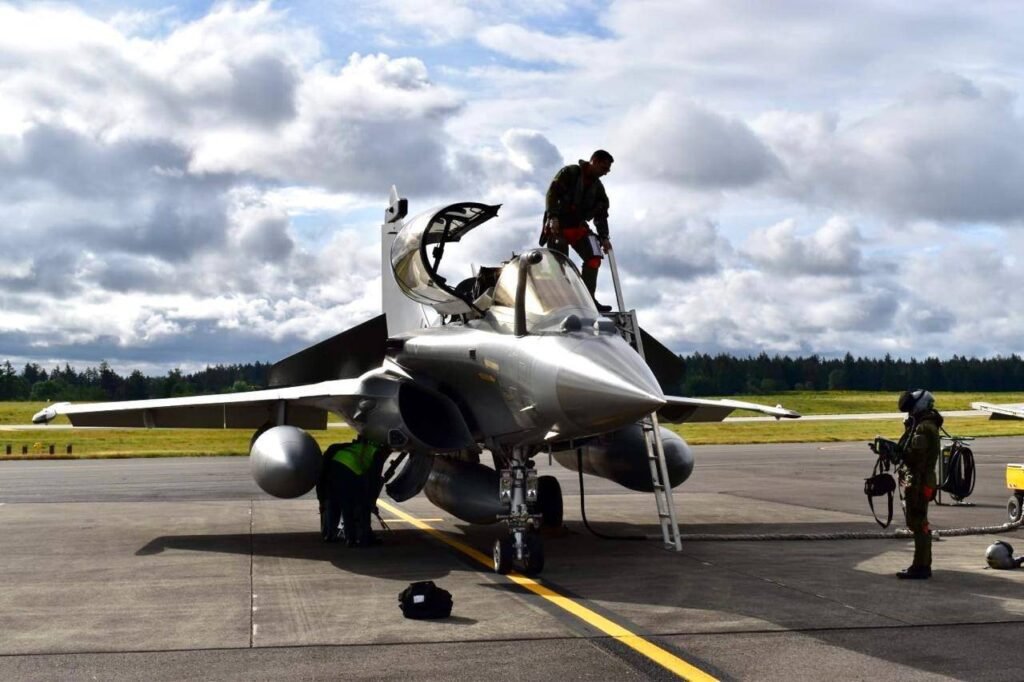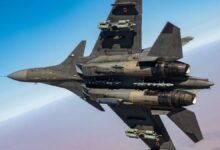Can Indian Fighter Pilots Switch to Another Flying Branch?

Indian Air Force (IAF) pilots face stringent physical fitness standards, especially those in roles like fighter pilots. Generally, once assigned to a specific branch within the Flying Branch, such as fighter pilots or transport pilots, it’s challenging to switch to another branch within the Flying Branch due to the rigorous training requirements and specialization involved.
However, under certain circumstances, pilots may be allowed to transfer to different roles or branches within the IAF. For instance, if a pilot faces challenges in completing flying training and is subsequently suspended, they might be considered for a transfer to a different technical or ground duty branch, provided they meet the necessary qualifications and medical standards for the new role.
Overall, while the IAF does allow for flexibility in career paths under specific conditions, transfers between different branches or streams within the Flying Branch are carefully considered and not guaranteed, reflecting the specialized nature of aviation roles and the need for consistent training and expertise.

The Indian Air Force (IAF) stands as one of Asia’s largest and among the region’s few combat-proven air forces. The focus of these efforts is to expedite the development of both new aircrew and maintenance personnel, ensuring they swiftly gain the necessary expertise and skills for operational missions.
In recent years, the Indian Air Force (IAF) has nearly doubled its intake of pilot trainees, a testament to its ability to accommodate this increase without compromising on training standards. This achievement has been facilitated through the streamlining of the training curriculum and efficient utilization of training resources. The introduction of modern Western combat platforms has prompted a thorough overhaul of the technical training syllabus to align with the requirements of these advanced systems.
In 2018, the IAF completed its transition to the Swiss Pilatus PC-7 MKII for basic training, marking the retirement of the HPT-32, which featured a piston engine and analog cockpit. The PC-7 MKII, equipped with a glass cockpit, introduced advanced training aids such as Fixed Base Full Mission Simulators (FBFMS), Avionics Part Task Trainers (APTT), and Cockpit Procedure Trainers (CPT) for Stage 1 flight training.

Additionally, the IAF is preparing to acquire 70 indigenous Hindustan Turbo Trainer 40 (HTT-40) basic trainers from HAL, following approval from India’s Ministry of Defence in March 2023. This procurement, valued at approximately US$850 million, includes simulators and other training aids. Deliveries are expected to commence within 30 months of contract signing, with all 70 trainers scheduled for delivery within six years.
The IAF has also transitioned its helicopter training to the Russian Mi-17, replacing the older Mi-8 used until 2017. Moreover, it has expanded training opportunities to include friendly foreign countries, a practice previously established in transport aircraft training.
For transport aircraft training, the IAF has shifted to the Dorner Do-228, manufactured under license by HAL in India. Recently, HAL commissioned a new DO-228 Level-D Full Flight & Mission Simulator (FFMS), equipped with a glass cockpit, at Air Force Station (AFS) Yelahanka in Bangalore. This simulator supports training for the upgraded Do-228 aircraft now entering service, alongside Virtual Reality (VR) based training for technical personnel.
Different Stages of IAF Pilot Training
The IAF employs a three-stage flying training. Stage I involves training with the PC-7 MKII for fighter streams, Mi-17 for helicopter streams, and Do-228 for transport aircraft streams. Pilots destined for the fighter stream proceed to Stage II and Stage III flight training, utilizing HAL-built Kiran Mk-I/IA jet trainers, PC-7 MKIIs, and BAE Systems Hawk Mk132 advanced jet trainers, respectively.
The aging Kiran Mk-I/IA fleet is slated for replacement with the HAL HJT-36 intermediate jet trainer, currently awaiting certification. Meanwhile, the Hawk Mk132 fleet plays a crucial role in preparing pilots for operational aircraft like the Rafale F3-R, Mirage 2000 T/TI, Sukhoi SU-30 MKI, Tejas Mk1, and Jaguar.
Process For IAF Pilots To Change Their Stream

The process for Indian Air Force (IAF) pilots to change their stream, or specialty, typically involves several steps and considerations:
Speaking to Air Marshal GS Bedi (Retd), An Aviation and Defence Expert pilots cannot change branch at their will. IAF Pilots can change streams or branch owing to medical issues or performance issues. Fighter pilots can change stream to Transport or helicopter because of the above reasons but the reverse is not possible. Similarly, pilots can change branch to Logistics or Admin or any other based on qualifications. Further he said change of branch into the Flying Branch. Unfortunately, nobody can change branches at will. That too, a change to the flying branch is never allowed. You need to join up for flying branch after undergoing appropriate selections.
While speaking to Sheikh Akhter, Col R Bhaduri (Retd), Ex Army Aviation said to become a QFI or FTP/ETP is a personal choice of a pilot, it doesn’t matter from whether Fighter or Transport or Helicopter stream. It is all subject to passing qualifying examinations and a gruelling training course. Becoming a QFI, FTP/ETP does not mean that the pilot is out of combat duty. Even engineers can become TPE (Test pilot engineer) / FTE(Flight Test Engineer).
Changeover is normally not voluntary but based on medical categorisation, if a pilot becomes medically unfit to fly fighters, he/she may be shifted to transport of helicopters at the discretion of Air HQ, in case fit for flying. Otherwise shifted to Admin/logistics branch within IAF.
However, someone who joined the flying branch, could later change to one of the ground duties branches. That is done only when the guy is declared permanently unfit for flying branch but fit for ground duties. Cadets selected for the Indian Air Force (IAF) through the National Defence Academy (NDA) are primarily allocated into the flying branch, comprising approximately 75% of the intake, while the remaining cadets join the Administration and Logistics branches. Some cadets are also selected for technical branches via the NDA.
Training for technical branches exclusively takes place at the Air Force Technical College (AFTC), Jalahalli, Bengaluru, and candidates must hold an engineering degree before commencing training. Candidates selected for other branches undergo training at the Air Force Academy (AFA), Dundigul, Hyderabad.
Once a candidate joins training in any ground duties branch, they are not eligible to transfer to the Flying Branch. However, a cadet who joins the Flying Branch may potentially transfer to a ground duties branch later in their career under specific circumstances. This transfer is feasible if the cadet fails flying training but performs well in other aspects of training. It can also occur if the cadet is reassigned to a lower medical category unfit for flying but suitable for ground duties, including instances of medical issues arising after commissioning and within nearly ten years of service.
Physical fitness standards are more stringent for aircrew members such as pilots, navigators, and flight engineers, particularly for fighter pilots. Switching branches within the Flying Branch is generally not permitted, especially due to the high rate of rejections in flying training. However, if a candidate is suspended from flying training, they may potentially be allowed to join the next training session for the AE(M) branch, provided they meet the educational qualifications.
Additionally, a change to the AE(M) branch could be granted if a candidate develops a medical condition that renders them unfit for the Flying Branch but suitable for the AE(M) branch. Regarding the possibility of an Indian Navy pilot transferring to the Indian Air Force, it is indeed feasible. Indian Navy pilots can and do serve with the Indian Air Force, often for specialized courses like those offered at the Joint Air Warfare College. While regulations permit officers from the Navy, Air Force, and Army to switch services temporarily or permanently, such transfers are infrequent in practice.




